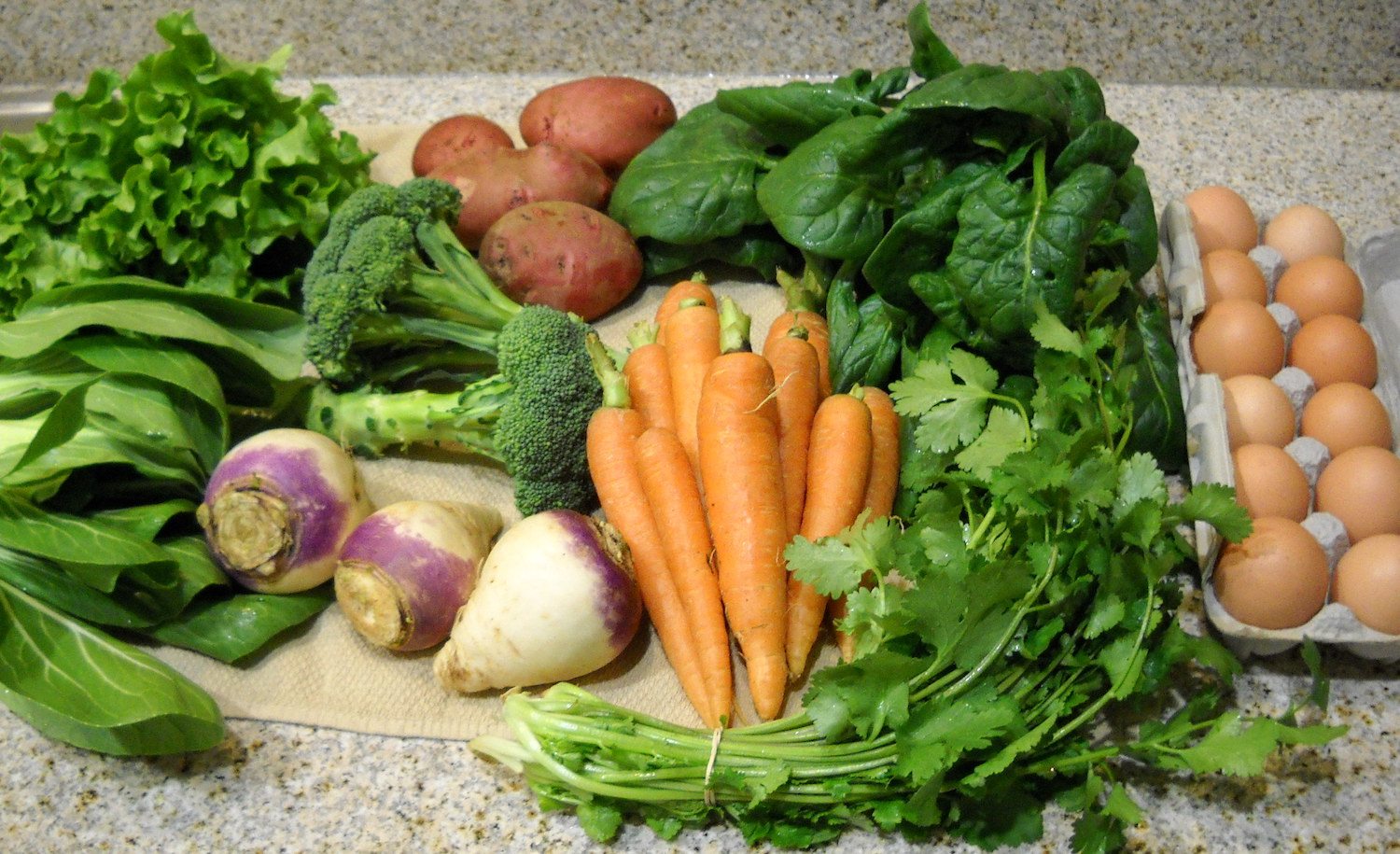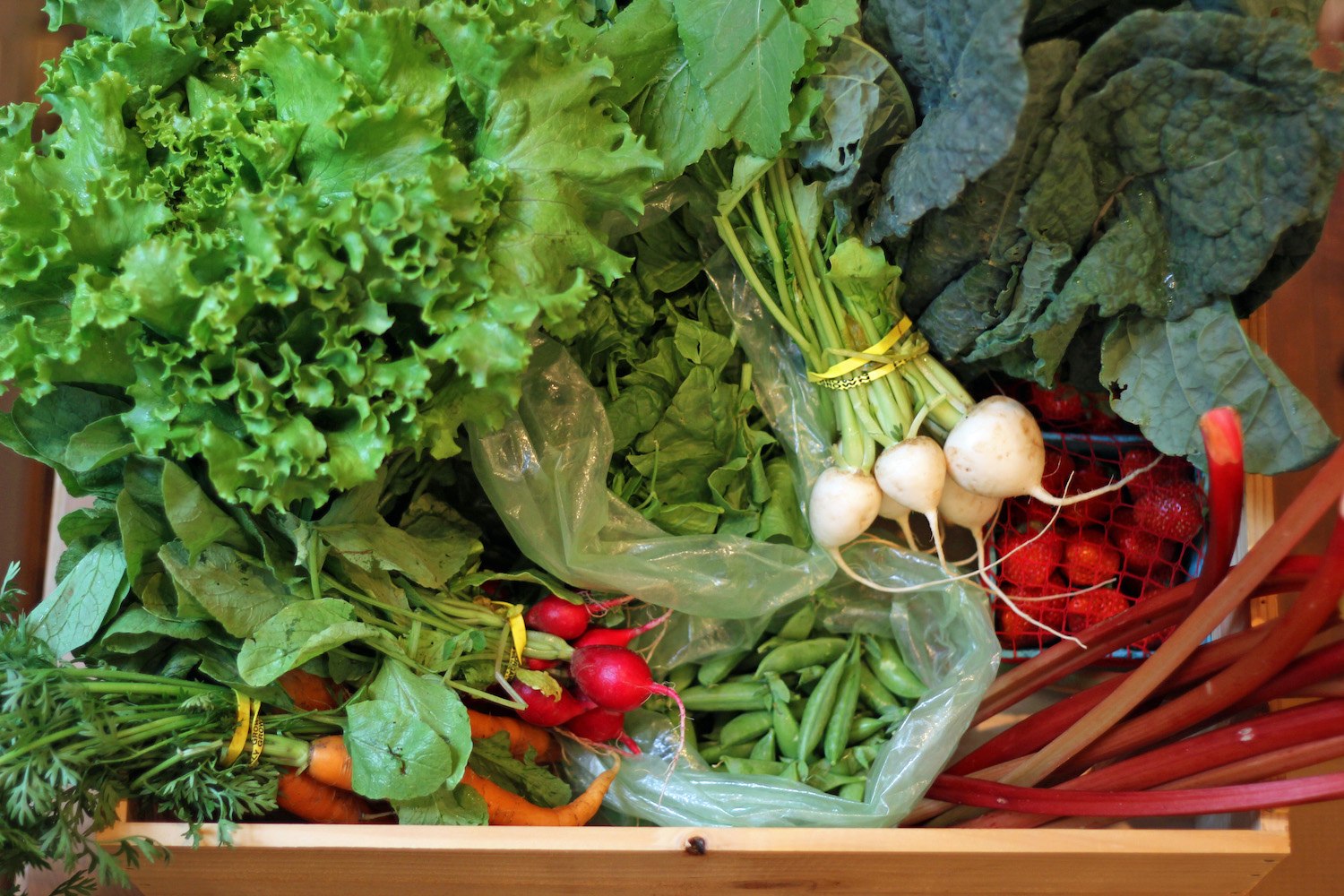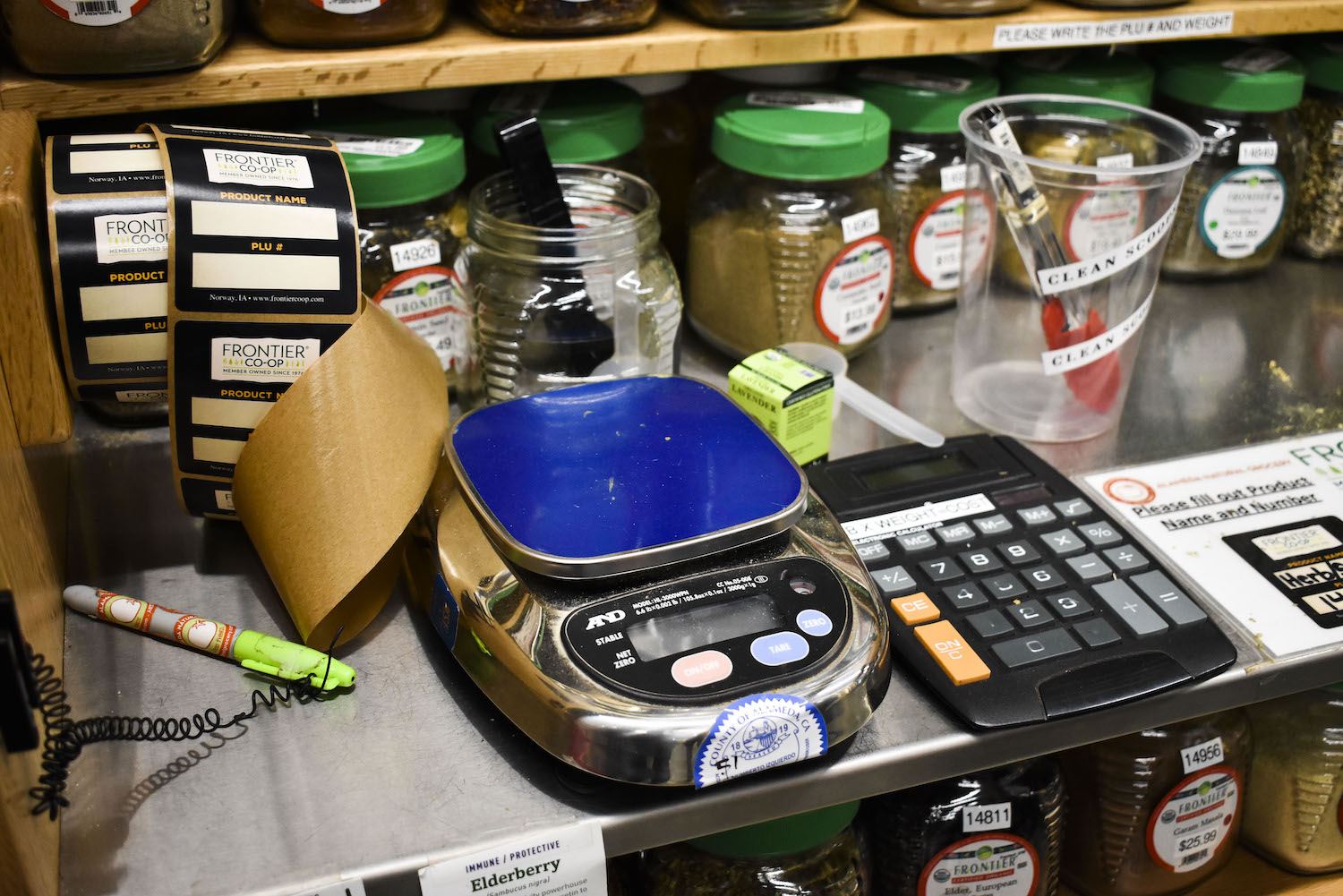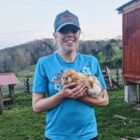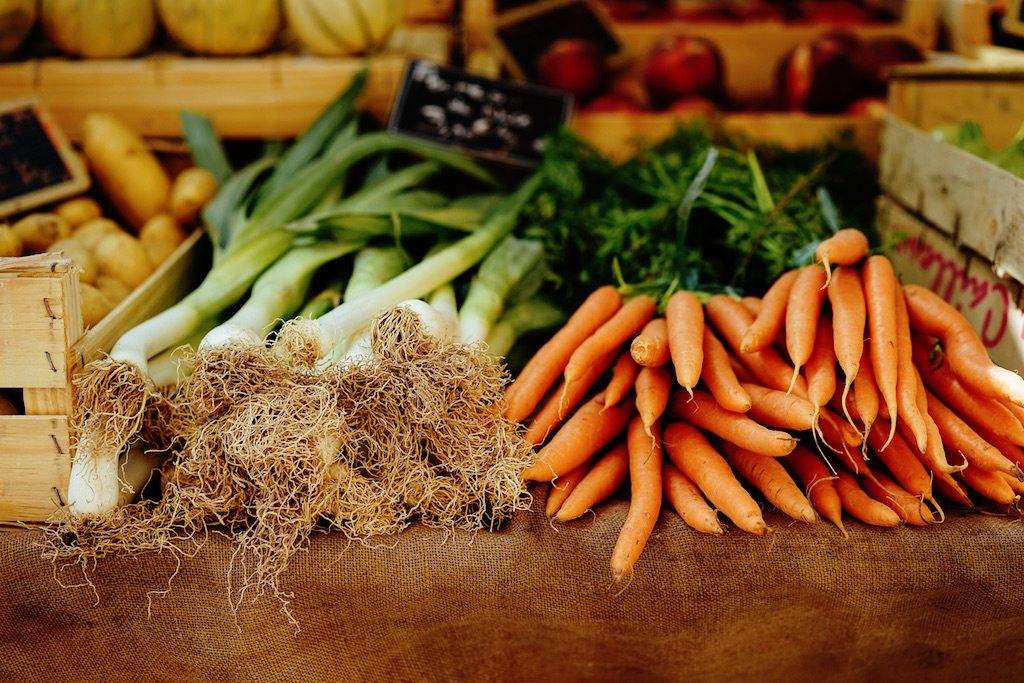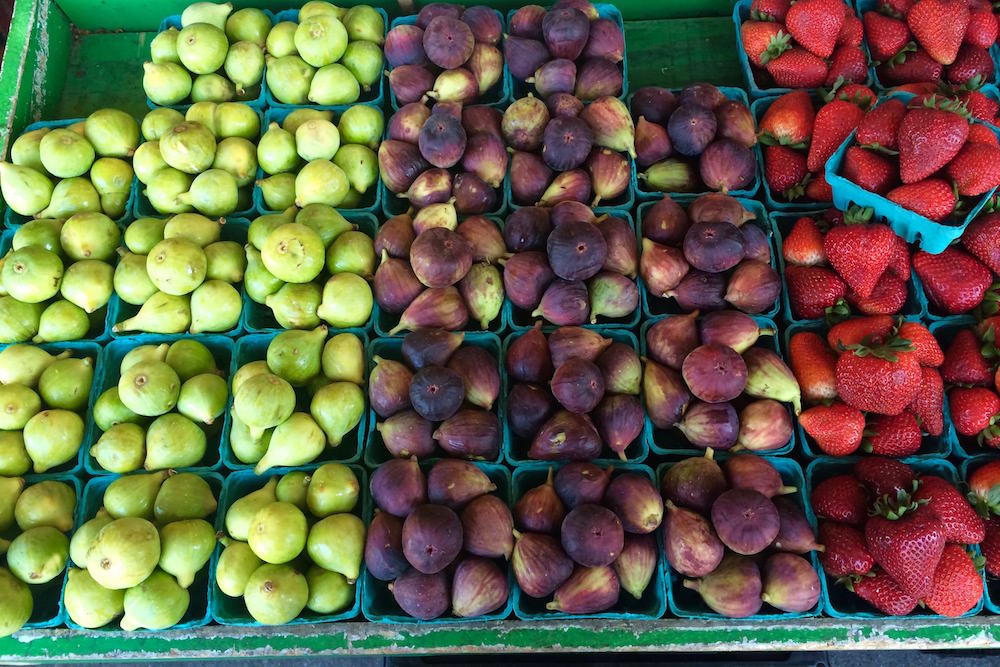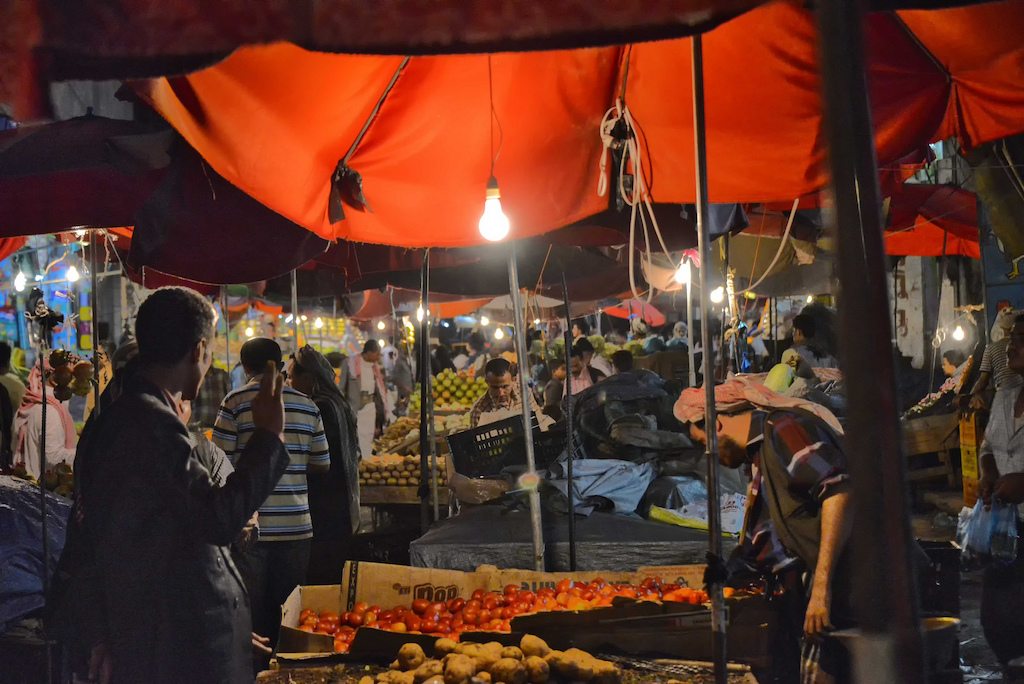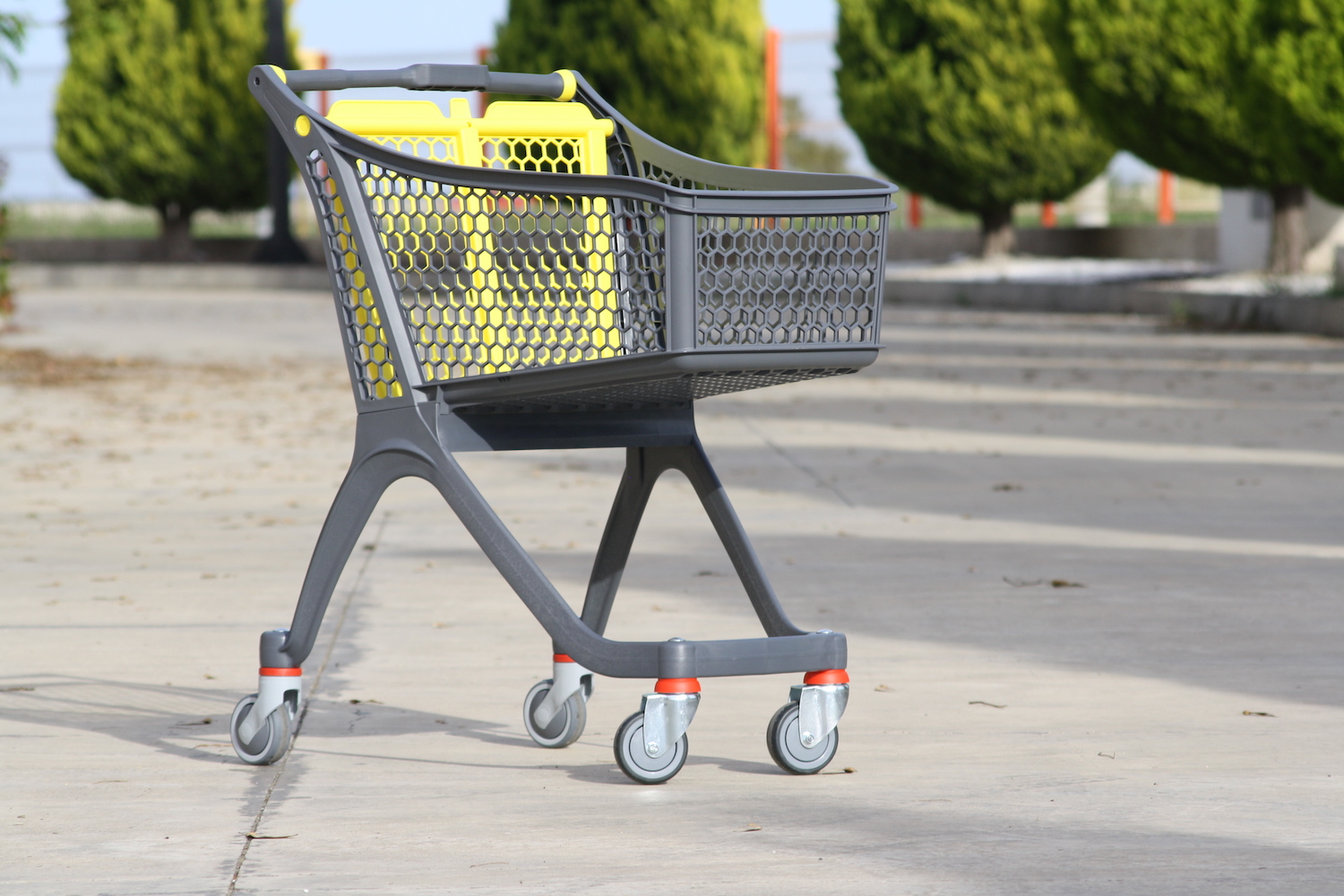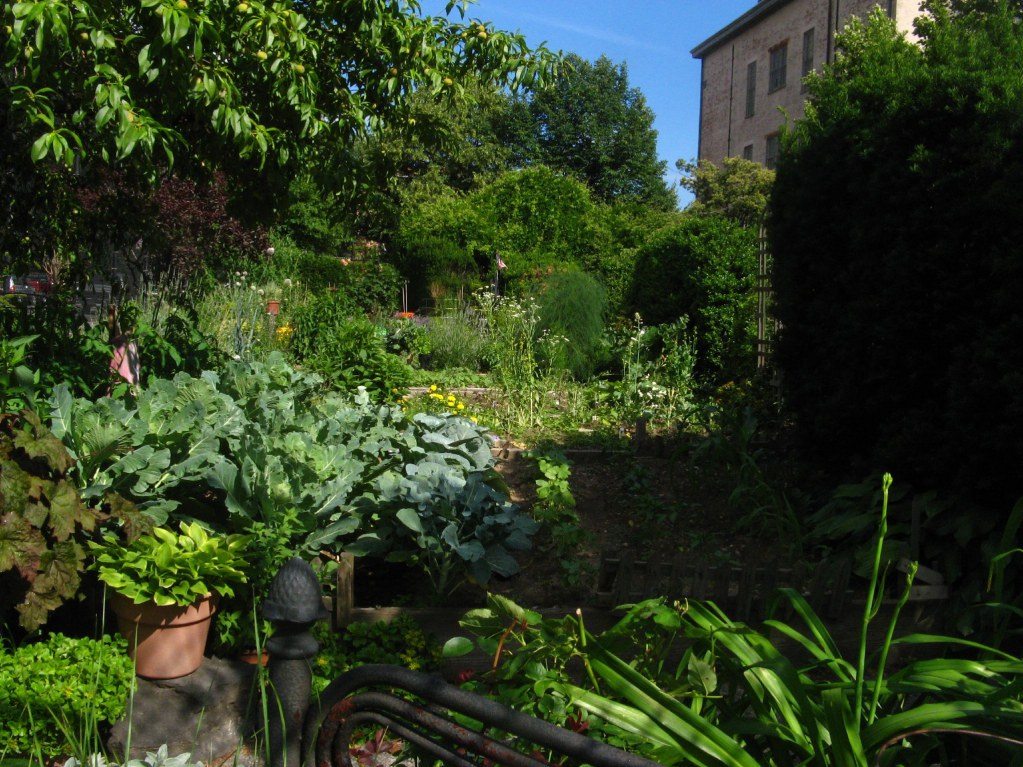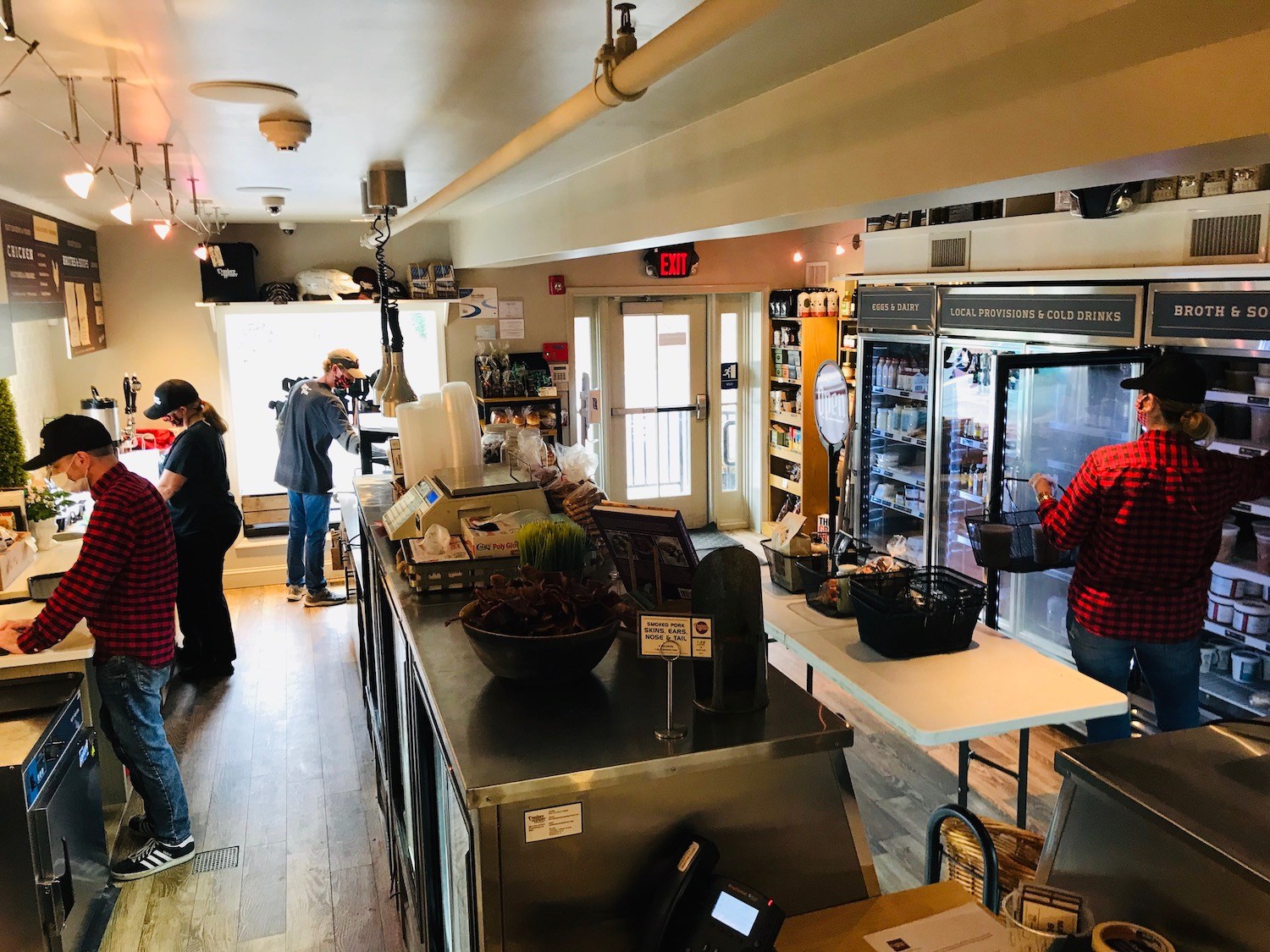Small farms are seeing an avalanche of sudden growth, and trying to ramp up to meet it.
Sarah Feeley seems like the model subscriber for a CSA (community supported agriculture) membership. Six years ago, when she moved from L.A. to the Bay Area, she got swept up by the locavore ethos that the best food comes from nearby small farms. Feeley fits a certain profile: She’s well-educated, feels deeply concerned about the environment, and worries about animal welfare and conditions for farm workers. In fact, a 2003 UC Santa Cruz study looked at who signed up for CSA memberships and why, and found that the profile of the typical consumer was, essentially, Feeley. But Feeley has never signed up for a CSA membership for one key reason: “I’m picky,” she says.
The CSA model—where an upfront membership fee gets you a weekly box of assorted veggies—has its flaws. It’s not great for picky people. Sometimes you have to pick up at a specific spot, which isn’t as convenient as home delivery. And, for many years, single farm CSAs only offered veggies, or fruit. Which meant you still had to go to the market for other staples. As writer Jessica McKenzie reported in her recent piece for The Counter, before Covid-19, traditional CSAs were suffering from a years-long decline. McKenzie points the finger at competition from other produce delivery models, which may or may not come directly from small, local farms.
But over the past six weeks, when grocery store shelves have been wiped clean while dairy farmers have been forced to dump milk and crops rot in the fields, many Americans have started to realize that our supply chains are less sturdy than they imagined. Add in the closing of several of the nation’s largest meat packing plants, and suddenly a box of produce—even if it includes things you don’t like much—starts to look like a smart buy.
At LocalHarvest.com, a website that connects consumers with 7,000 CSAs around the country, the first traffic surge came in early March. Previously, the site got about 15,000-20,000 visits a day, says Guillermo Payet, the site’s founder and president. Suddenly it was getting more than twice that. “By the end of March our servers were crashing—we were getting four to five times the usual load,” he says. A Google trend graph for “community supported agriculture” shows what Payet was seeing on an internet-wide scale: a massive spike.
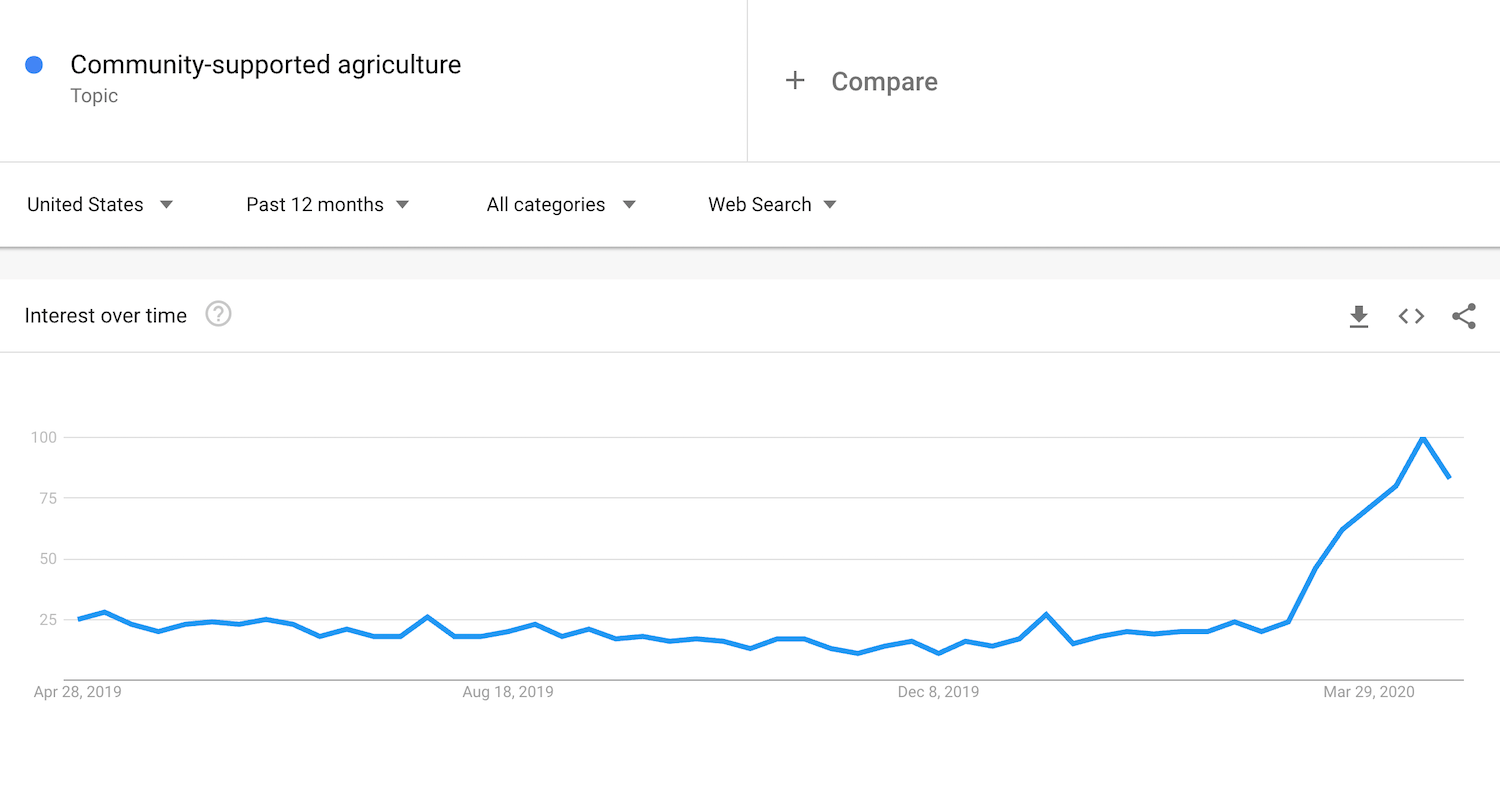
A screenshot of a Google trends search for community-supported agriculture.
The renewed interest in community supported agriculture is not a surprise to German sociologist Birgit Blaettel-Mink, PhD. In 2017, Blaettel-Mink authored a paper on CSAs as a response to issues with capitalism–when consumers start questioning animal welfare, fair wages, and consolidation among producers, for instance. She sent surveys to every CSA member and farmer in Germany, and got nearly 600 responses. She also did in-depth qualitative interviews with 10 farmers and CSA members, to go beyond the baseline ideas her survey may have captured. The final paper cites ideals like supporting neighbors and opting out of a dysfunctional system as reasons Germans signed up for CSAs. Feeley felt both of these things deeply as she sat down and googled “Bay Area organic CSAs.”
She wasn’t the only one hitting Google for answers. “Last week we had five new families join,” says Oleh Maczaj, who runs Roundout Valley Organics, a multi-farm CSA in Ellenville, New York. This may not seem huge, but this was a tiny CSA in a remote section of Upstate New York. For the past few years, their membership has hovered right around 90 families. Five new families in a single week was a startling jump. Even more surprising was the number of orders from existing clients. Roundout Valley is a flexible CSA—you don’t have to receive produce every week. This time of year, Maczaj usually fills about 15 orders a week. Last week, they filled twice that.
At LotFotL Community Farm in Elkhorn, Wisconsin, farm co-manager April Yuds is seeing something similar. Yuds spoke to McKenzie about her farm’s revamping of their CSA last year, which included letting customers pick exactly what produce they wanted each week off the back of a truck. After they made that change, memberships started to rise after five years of stagnancy. But the last six weeks? Well, that has been something else entirely. “We’ve already surpassed all of our CSA sales from last year,” says Yuds the first week of April. By April 20, the farm had a waiting list for families hoping to join its CSA.
Connecting directly with a local farmer cuts out questions about trucking and store stocking. It’s a little veggie insurance policy.
Of course, blizzards and tropical storms also clear out grocery store shelves, and consumer behavior doesn’t noticeably change in the long-term. But this feels different, possibly because there’s no firm end-date, and possibly because few Americans have ever experienced a global pandemic. While snow melts and hurricanes end, it’s harder to know when relief will come during this crisis.
“This challenge we’re now facing has refocused the value of regional food systems as they are proving to provide resilience and transparency in a time when so much is uncertain,” says attorney Jennifer Grossman, who splits her time between running a farm and a restaurant, and consulting for the Natural Resources Defense Council. There’s a reason Americans have purchased every last seed packet and baby chick in America: We’re all concerned about what happens if the trucks stop running, the cashiers strike, or farm workers can’t get visas. Connecting directly with a local farmer cuts out questions about trucking and store stocking. It’s a little veggie insurance policy.
To be clear, Americans don’t only support local food in a crisis (or at least that’s what they tell researchers). A 2018 Gallup poll found that 78 percent of Americans said they tried to incorporate local foods into their diets. But that was a self-reported survey, and people aren’t always truthful about what they actually buy.
Under the traditional model, the up-front membership fee—which can cost well over $300 per season—can be a barrier to entry for food-insecure households.
In a 2015 report to Congress on local food prepared by the USDA Economic Research Service, the authors noted that while direct-to-consumer farm sales (which includes farmers’ markets) grew 32 percent from 2002-2007, they fell flat from 2007 to 2012. In 2012, direct-to-consumer sales made up just .4 percent of all food sales. By 2017, the number had only grown to .7 percent.
But the April 2020 version of our world feels so different than the version we inhabited just a few months ago. Suddenly, many of us have time to cook. Those of us who once loved slowly strolling through the grocery stores are now opting for curbside pickup. And restaurants—what are those?
What hasn’t changed, though, is that economic barriers may persist for families wanting to give business to CSAs. Under the traditional model, the up-front membership fee—which can cost well over $300 per season—can be a barrier to entry for food-insecure households. Furthermore, having the time and energy to figure out how, exactly, to cook sunchokes and bok choy is a privilege, too. One almost no one who is parenting full- time while trying to work from home has.
“Regardless of Covid-19-imposed shutdowns, New York state farmers are still milking their cows twice a day, and sowing their seeds for spring, summer, and fall harvests. People are still eating.”
Grossman worries about how we can bring more equity and access into this resurgence in CSAs, especially in a time of such rampant economic uncertainty. Still, she’s adamant that they are the best path forward at this moment. “Regardless of Covid-19-imposed shutdowns, New York farmers are still milking their cows twice a day, and sowing their seeds for spring, summer, and fall harvests. People are still eating,” she says, adding that the challenge is going to be connecting farmers and consumers fast enough to keep farms running and people fed.
Right now, she and NRDC are working to organize more multi-farm CSAs, which gather produce, milk, eggs, meat, cheese, and sometimes bread from several neighboring farms and deliver them in one box. This is different than the traditional one-farm model, where a membership fee goes directly to a single entity. But it’s a way to offer more variety–and hopefully help many farmers who normally direct-sell to restaurants all at once. Still, it’s logistically complicated to get websites up, negotiate legal agreements between farmers, and figure out exactly how delivery will work. And there’s still the access problem. Grossman hopes to see philanthropic donors step in to help cover costs. She’s also hoping that expanding SNAP benefits so they cover CSAs can be an option in our rapidly changing economic reality.
It should be noted those options are both working well within our current capitalistic system. In Blaettel-Mink’s research, she found that many Germans wanted to duck completely out of the capitalist model for food procurement, and they wanted to support their neighbors while they did it. In a crisis, “People become more and more skeptical about capitalist logic and are searching for alternative ways of producing and consuming goods,” she explains.
“I’m concerned about the safety and wellbeing of our household, but I am also concerned about continuing to have access to locally grown foods. I want to support local businesses so they stay in business.”
But will small farmers have the capacity to feed them? “We are really committed to getting food out to our communities,” says Yuds, but she also knows that scaling up on a farm is often a slow process. By April 20, her farm’s CSA had a significant waiting list. Payet says that many of the CSAs listed on his site are starting waiting lists too. In other words: If you’ve been thinking about joining a CSA, don’t delay.
Feeley didn’t. She says that the novel coronavirus made her think even more carefully about where her dollars were going. “I’m concerned about the safety and wellbeing of our household, but I am also concerned about continuing to have access to locally grown foods. I want to support local businesses so they stay in business,” she says. And in an economic moment like this, she adds that keeping dollars in her community feels especially important.
On small farms like Yuds’, there’s a strange feeling that comes with new opportunity in the midst of what’s shaping up to be a horrible American tragedy. “Sometimes, we need something big to really open our eyes and make us take something seriously and make it a priority,” she says. “People are hearing and seeing and recognizing how important a local food system is,” she says. Yuds hopes that when America is healthy again, we won’t forget the small farmers who made sure their neighbors were fed.
Still, Blaettel-Mink wonders if Americans will forget. “After the different food crises [in Germany] in the last, say, 10 years, people started to change their consumption behavior; but after a while they returned to former routinized behavior. Routine and comfort are two very strong determinants of consumers’ decision-making,” she says.
In a moment like this, there’s comfort in having a farm just outside of town to buy from. Making that routine stick? That will be the real challenge.
